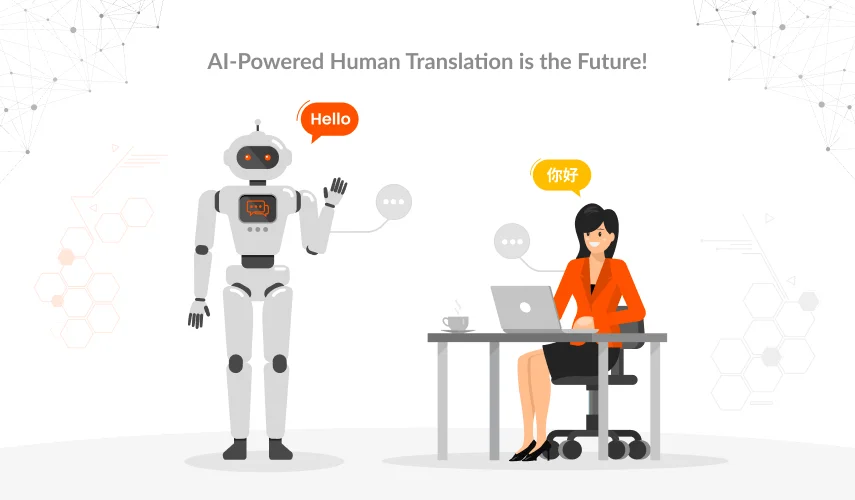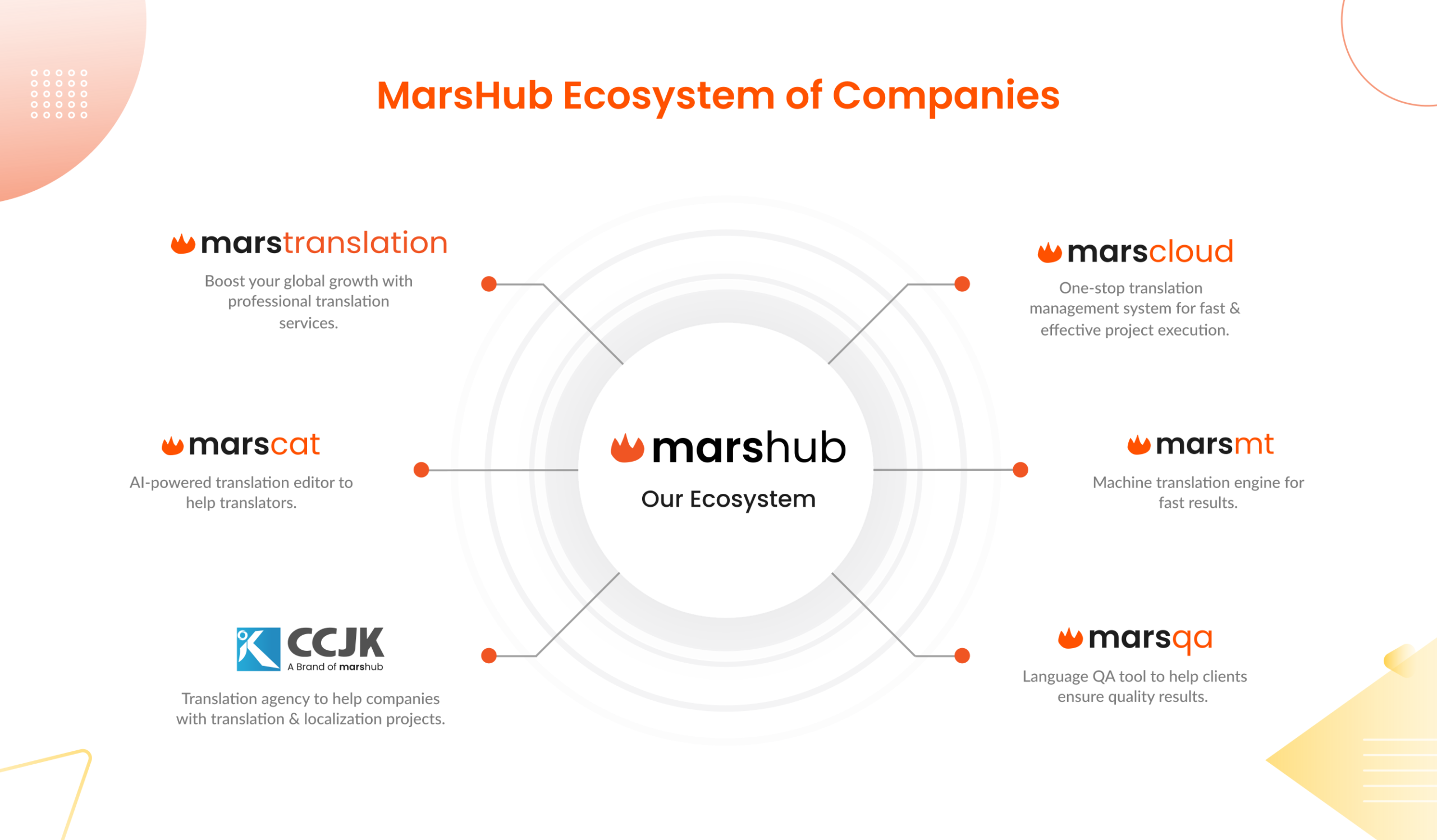There was a time when Google Translate was the only translation tool people knew; even companies would use this open-source tool for creating brand translation. Lack of knowledge and ignoring the significance of professional translation led to big translation blunders made by well-known companies.
Things have changed now, and the demand for professional translation services is becoming an all-time high. In the future, the industry is expected to grow even further. By now, companies have realized the importance of good translation for their businesses.
In the coming years, the translation industry is expected to reach $73.6 billion by 2025. There will be more businesses localizing their brands, more language service providers will be offering translation services, more translation management tools will be launched, and more jobs will be there for interpreters and translators.
Let’s find out the factors shaping the future of the translation industry.
Factors Influencing The Future of The Translation Industry
The past few years have been transformative for the localization and translation industry because of the rapid increase in the demand for localization and translation services. Companies have realized the significance of localization for the brand which gives a boost to the translation business worldwide. Following are some important shifts happening in the translation section that are shaping the future of the translation industry.
1. Use of Artificial Intelligence
Artificial intelligence technology is influencing the translation industry significantly. There is much AI-powered software available that effectively manages the translation workflow and workloads. The use of this technology has not just made translation easier, hassle-free, and faster but also more cost-effective. Some translation AI systems are so powerful that they allow you to translate into 7000 languages and dialects.
With the help of AI-based software now LSPs and businesses can generate high-quality translations in the quickest turnaround time. These systems are efficient enough to provide a human-like translation that is hard to tell if it is done by a machine or a human. The latest translation systems have mastered the art of artificial intelligence with deep learning technology. It is making it possible to translate content into multiple languages without loading the context of the original message.
2. Increased Demand for Automation
As the demand for translation services has increased, the need to generate quick translations with the best quality is also becoming crucial. Traditional translation processes are very complicated that not just leads to more errors but also slows down the translation operations. There is a need for an advanced translation management system that would optimize translation operations. These systems also make it possible for businesses to manage more work in less time without compromising on quality. Using the TMS tools, businesses can streamline their translation workflow making the whole translation process agile and hassle-free.
Automation in the translation industry saves both time and money, making it more convenient for businesses to manage their translations.
3. Rise of Machine Translation
To cope with the increasing translation demand around the globe, there is a need for a solution that is convenient, affordable, and agile. Professional translators are very expensive and also take a lot of time to complete a translation task. Machine translation, on the other hand, is very convenient, comparatively cheap, and faster. Instead of hiring professional linguists, companies now prefer using machine tools that allow them to generate high volumes of translation in a matter of seconds.
Advanced AI technology has made machine translation not just faster but also high in quality. There is no need to worry about the context of your translations because professional machine translation tools are smart enough to generate error-free, in-context translations. Many open-source and paid machine translation tools are available online. However, for professional translations, you should only get your hands on paid ones (provided by a reliable service provider.)
4. Influence of Big Data
There is no future without data. Data science is going to dominate the translation industry just like any other sector. Translation systems use a massive amount of data, which is mostly previously done translation and literature, to generate new translations. So, more data means more accurate and quality translation.
Most machine-translation systems use translation memory to generate new translations. Translation memory is the database storage of previously approved translations that are used as a reference to create new ones.
To create a high-quality translation, your data should be of high quality. Of course, maintaining the data would not be easy, you need to do frequent cleaning, deduplication, anonymization, tokenization, etc. You have to filter your data through different steps and use advanced techniques to customize the data for every new topic or industry.
5. Neutral Speech Translations
Speech translation is also becoming more popular in the translation business. There are translation tools that can generate translation through voice; no need to write down any text. Google Translate is an example here. It is an open-source tool that offers error-free translation by recognizing the speech. The whole idea behind the concept of neutral speech translation is to make the translation process more convenient and hassle-free for everyone. The Chinese company, ByteDance created a toolkit for generating neutral speech translation to promote speech translation research and products. Many tech companies are also working on speech translation technology, such as Google and Microsoft. In the future, speech technology seems to dominate the translation industry because of its high convenience.
6. Demand For Subtitling
Videos have higher possibilities of grabbing the attention of users and better engaging with them. The need for subtitles emerges, considering the fact that most users watch videos mute, especially when they are in a public setting. The video on social media automatically plays when users scroll over them. There is no need to turn on the volume, the user can still watch the video by seeing the subtitles. Moreover, your video content reaches the globe, and encounters people from different backgrounds, speaking different languages. Having the subtitle option with your video content makes it more understandable for foreign audiences. The use of subtitles is also high in demand in the media industry. Movies that are originally made in native languages can be watched by global audiences with subtitles.
7. Collaborative Tools
The global pandemic has made big changes to our lives and the way we do our jobs. The extensive lockdown has brought positive improvements to remote work conditions and made it more convenient for people to work from their homes. In the translation sector, businesses have mostly hired remote workers to manage their translation operations. In this case, there are some professional collaborative tools that help the localization teams communicate with each other down the line. There are TMS with advanced collaborative features that promote effective communication and collaboration among remote teams. In the future, translation businesses seem to set their staff free from location dependency.
Industries With High Translation Service Demand

There is a high demand for translation services in almost every field and sector, but it has influenced some industries more than others. The following are the industries with the highest demand for translation services that are expected to increase further in the future.
1. Medical Translations
COVID-19 has taught us all about the uncertainties of life, and how things can change so drastically. Healthcare has been the main concern of people throughout the pandemic times. Millions of people got infected by the coronavirus, and there were massive deaths that created a sense of extreme fear. Throughout this time, the medical sector has been so active, not just the medical staff that have bravely handled the situation but there is a positive transformative in the medical field.
Healthcare providers, especially those that come under government control, work towards spreading awareness about the symptoms, precautions, cure, and vaccination of the coronavirus. Translations have helped healthcare organizations to reach out to the masses around the globe. People are becoming more conscious of their health and the need for quality healthcare services is at an all-time high. In the future, the demand for translation solutions in the medical sector is expected to grow further.
2. Media Translation
Just like the medical sector, if there is any other sector that flourished during the pandemic, it is the media industry. We have seen how the demand for media streaming platforms has increased during COVID-19. People were at their homes for a long time, and there was nothing better than a good movie to kill boredom. Higher user demand for online media streaming platforms increased the need for subtitles and dubbing. Dubbing and subtitles provided with the movies, documentaries, or seasons enhance user understanding of a story, and they can better connect with the content.
Online media streaming platforms, such as Netflix provide subtitles and dubbing with their content to connect people from diversified backgrounds with their stories.
3. Business Translation
Last, but certainly not least, the demand for translation services in the business sector is going to multiply in the coming years. Companies are becoming aware of creating a localized brand that can resonate with their target audiences. Business translation allows companies to smoothly enter foreign markets and create positive brand awareness. Knowing the fact that people are more likely to buy from brands that speak their languages, companies are now focusing more on creating a multilingual online brand presence. The demand for business translation services is continuously increasing, and there are many language service providers out there to serve the need.
Conclusion
The rapid adoption of translation services by major industries around the world has made the future of the translation industry seem brighter. Whether you are a business, healthcare provider, educationalist, or movie producer, getting your content translated into the native languages, providing subtitles or dubbing, and localizing the brand are essential to capture the attention of target customers. Considering the major factors influencing the future of the translation industry, companies need to prepare themselves for the changes in the translation business landscape. If you haven’t already acquired the benefits of translation, you should get your hands on it as soon as possible.



